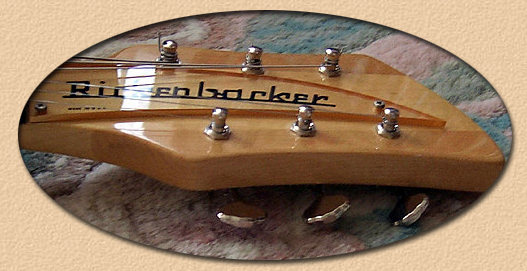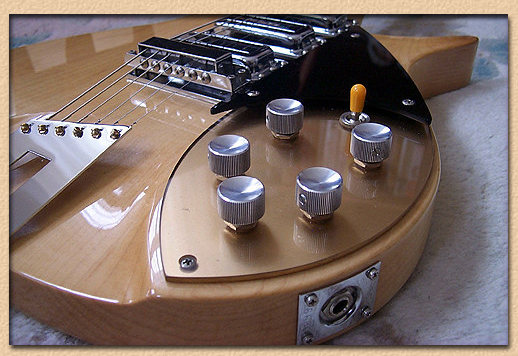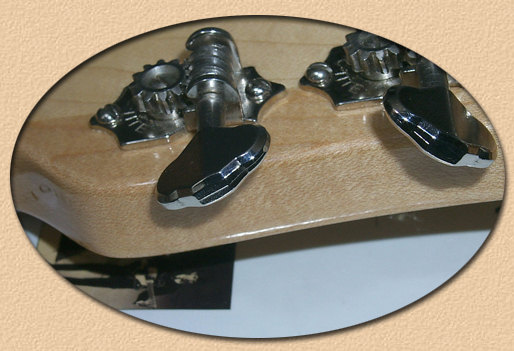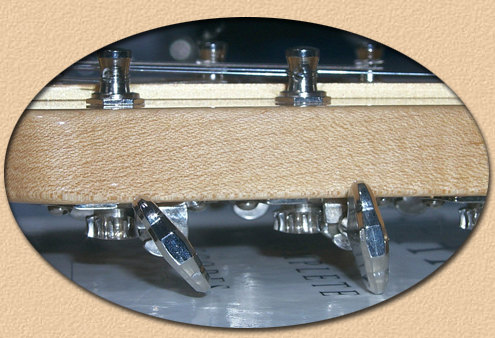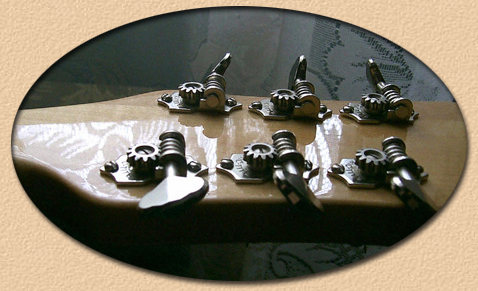| Old Trends - New Transitions |
This Model 350 Rickenbacker has made its way from California to South Carolina and then to New Brunswick, Canada. It arrived as a Model 350 Liverpool, however, in the past six years has undergone a number of changes that have truly transformed its look and sound. This most beautiful instrument retains the 24 frets of the Model 350 Liverpool, while at the same time borrows a number of the features from the majestic Model 350V63, most noteably the trapeze tailpiece and the chrome-bar "toaster" pickups. The impetus for these changes was, of course, John Lennon. At the same time, however, a number of other features were adopted that are in keeping with the early history of Rickenbacker guitars.
Suffice it to say that it has undergone a number of transitions, some of which are apparent and others more covert. These changes have included: the well-known "R" tailpiece changed to the Trapeze from earlier times; the pickups switched from high gains, to toasters, to an added humbucker, and finally the return to all toasters; the bottom pickguard changed to gold; the top-tier guard added in white and then changed to black; the knobs changed from Rickenbacker silver tops to Hofner reproductions; the raised white truss-rod cover changed to gold; the toggle switch knob changed from black to antique gold; the wiring altered to enable the use of any combination of pickups; the tweaked tonality of the neck pickup to allow for a brighter sound; and now the addition of RIC-TITE tuners in place of the standard more modern Schallers.
|
|
